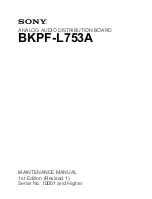
Chapter 2
Hardware Overview
©
National Instruments Corporation
2-5
•
Trigger control
—You can start an acquisition by enabling external
or RTSI bus trigger lines. Each of these inputs can start a video
acquisition on a rising or falling edge. You can use all four external
triggers and up to four RTSI bus triggers simultaneously.
•
Delayed acquisition
—Use either software or triggers to start
acquisitions instantaneously or after skipping a specific number of
frames. You can use delayed acquisition for post-trigger applications.
Acquisition Window Control
You can configure the following parameters on the NI 1428 to control the
video acquisition window:
•
Acquisition window
—The NI 1428 allows the user to specify a
particular region of active pixels and active lines within the incoming
video data. The active pixel region selects the starting pixel and
number of pixels to be acquired relative to the assertion edge of the
horizontal (or line) enable signal from the camera. The active line
region selects the starting line and number of lines to be acquired
relative to the assertion edge of the vertical (or frame) enable signal.
•
Region of interest
—
The NI 1428 uses a second level of active pixel
and active line regions for selecting a region of interest. Using the
region-of-interest circuitry, the device acquires only a selected subset
of the acquisition window.
Serial Interface
The NI 1428 provides serial connections to and from the camera through
two LVDS pairs in the Camera Link cable. All Camera Link serial
communication uses one start bit, one stop bit, no parity, and no hardware
handshaking.
The NI 1428 supports the following baud rates: 56000, 38400, 19200,
9600, 7200, 4800, 3600, 2400, 2000, 1800, 1200, 600, and 300.
You can use the serial interface interactively with MAX and
clsercon.exe
, or programmatically with LabVIEW and C.
Interactively:
•
MAX
—Use MAX with a camera file containing preprogrammed
commands. When an acquisition is initiated, the commands are sent to
the camera.
















































